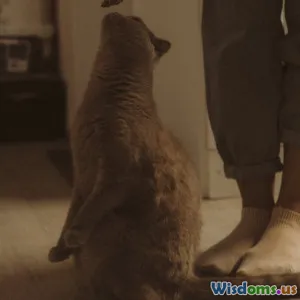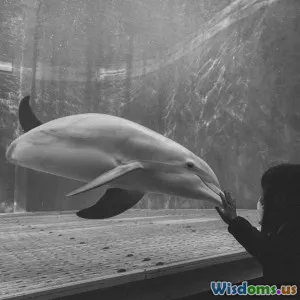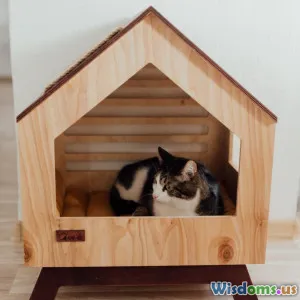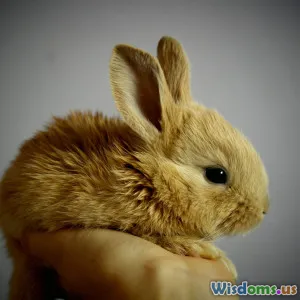
Understanding Your Cat's Body Language
7 min read Decode your cat’s moods by understanding their body language with our expert guide full of clear insights and real examples. (0 Reviews)
Understanding Your Cat's Body Language
Cats are enigmatic companions — often inscrutable, aloof, yet deeply expressive in their unique way of communication. Unlike dogs, cats don’t rely heavily on vocalizations, nor do they always seek constant human interaction. Instead, they communicate volumes through their body language. Mastering this feline language is key to building a rewarding relationship with your cat and addressing their needs and emotions effectively.
Why Understanding Cat Body Language Matters
Cats express mood, intentions, and needs non-verbally. For instance, a slowly blinking cat signals affection and trust, while an arched back and puffed-up tail convey fear or aggression.
Misreading these signs can lead to unintended stress for your pet or even injury. According to a study published in "Applied Animal Behaviour Science," cats exhibiting clear body signals reduces behavioral problems by encouraging positive human-cat interaction.
Understanding their signals also enhances training, creates a safer home environment, and deepens your bond.
Key Elements of Cat Body Language
1. Tail Talk: The Feline Barometer
Your cat’s tail is perhaps their most expressive appendage.
- Tail Up: Confidence and happiness. Cats often greet owners this way.
- Tail Twitching: Can indicate curiosity or mild annoyance depending on speed.
- Puffed Tail: A defensive posture signaling fear or aggression; the cat is trying to appear larger.
- Low or Tucked Tail: Indicates fear, submission, or insecurity.
Real-world Insight: When cats meet unfamiliar humans, those with a raised tail are typically more sociable and confident, while tucked tails may show a need for careful, slow introductions.
2. Ear Positions: Your Cat's Radar and Mood Indicator
Ears provide clues about where your cat’s attention lies and how they feel.
- Forward and Upright: Alert, interested, or happy.
- Sideways ('Airplane ears'): Irritation or indecision.
- Flat Against Head: Fear, anxiety, or aggression.
Example: In shelters, cats displaying flattened ears often indicate stress and may require a quiet approach to build trust.
3. Eyes: Windows to the Cat’s Soul
The size and shape of a cat’s pupils, along with blinking patterns, communicate a wealth of emotion.
- Slow Blinking: Often called "cat kisses," this shows relaxation and affection; responding with slow blinks can build trust.
- Dilated Pupils: Can signal excitement, fear, or aggression.
- Narrowed or Slitted Pupils: Calmness or focus.
4. Posture and Movement: Understanding Intent
The way a cat carries itself reveals much about their mindset.
- Arched Back With Fur Raised: Defensive or frightened.
- Relaxed, Loaf Position: Comfortable and content.
- Stalking or Crouching Low: Hunting or cautious behavior.
Expert Advice: According to Dr. John Bradshaw, a cat behavior expert, noticing subtle shifts—like transitioning from relaxed to alert—can prevent conflicts.
5. Vocalizations Coupled With Body Language
Although not purely body language, sounds paired with physical cues help decode meaning.
- Purring with relaxed posture: Contentment.
- Hissing accompanied by ears flat and arched posture: Defensive warning.
Biologist Dr. Desmond Morris notes vocalizations combined with body language provide a fuller picture than vocalizations alone.
Practical Tips to Enhance Understanding
- Observe in Different Contexts: Your cat might use different signals when playing versus when frightened.
- Respond Thoughtfully: If a cat’s body language warns agitation, give space rather than approach.
- Engage in Slow Blink Exchanges: This normalizes communication and trust.
- Consult a Veterinarian or Behaviorist If Uncertain: Sudden changes may signal pain or illness.
The Emotional Spectrum: From Happiness to Distress
Understanding body language helps you identify emotional states:
- Happy and Relaxed Cat: Tail up, slow or no twitch, ears forward, and slow blinking.
- Curious or Slightly Annoyed: Tail flicks, ears sideways, alert stance.
- Stress or Fear: Crouched body, pupils dilated, ears back, tail tucked.
- Aggressive or Defensive: Arched back, puffed fur, ears flat, hissing or growling.
Recognizing these states allows owners to adjust interactions—whether it’s giving loneliness-stricken cats more attention or respecting a cat’s boundaries when stressed.
Conclusion
Deciphering your cat’s body language is both an art and a science, opening a window into their emotional world that's often overlooked. By paying close attention to tail twitches, ear flicks, eye expressions, and posture, you gain invaluable insight into their feelings and needs. This understanding not only fosters a stronger human-cat bond but enhances your ability to provide compassionate care tailored to your feline's well-being. So, next time your cat greets you with a tail held high or gives you a slow blink, you’ll know exactly how to respond—leading to a happier, healthier, and more harmonious companionship.
Embrace the nuanced language of your cat, and you'll discover a rich dialogue waiting beneath those silent, whiskered expressions.
Rate the Post
User Reviews
Popular Posts




















